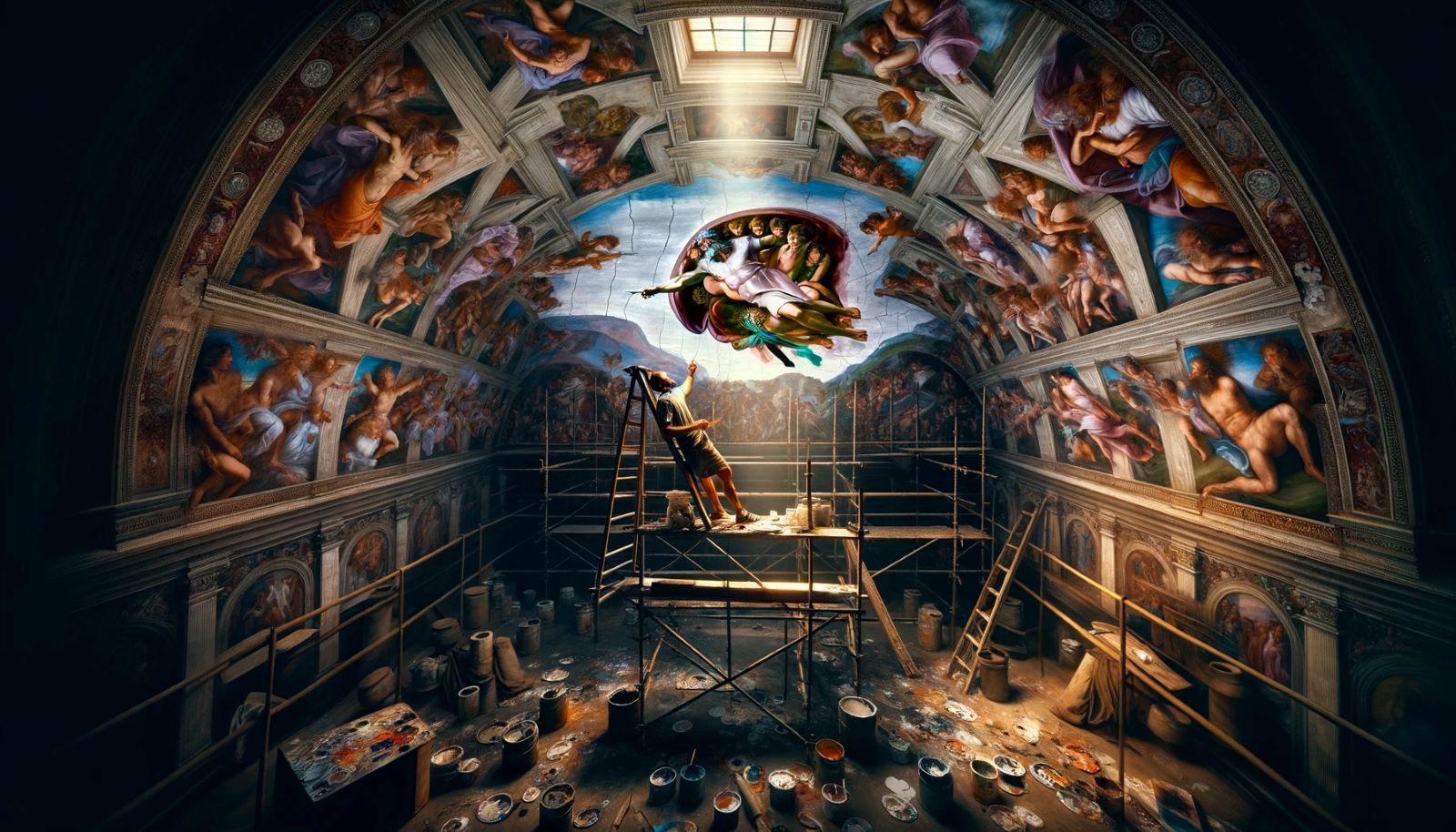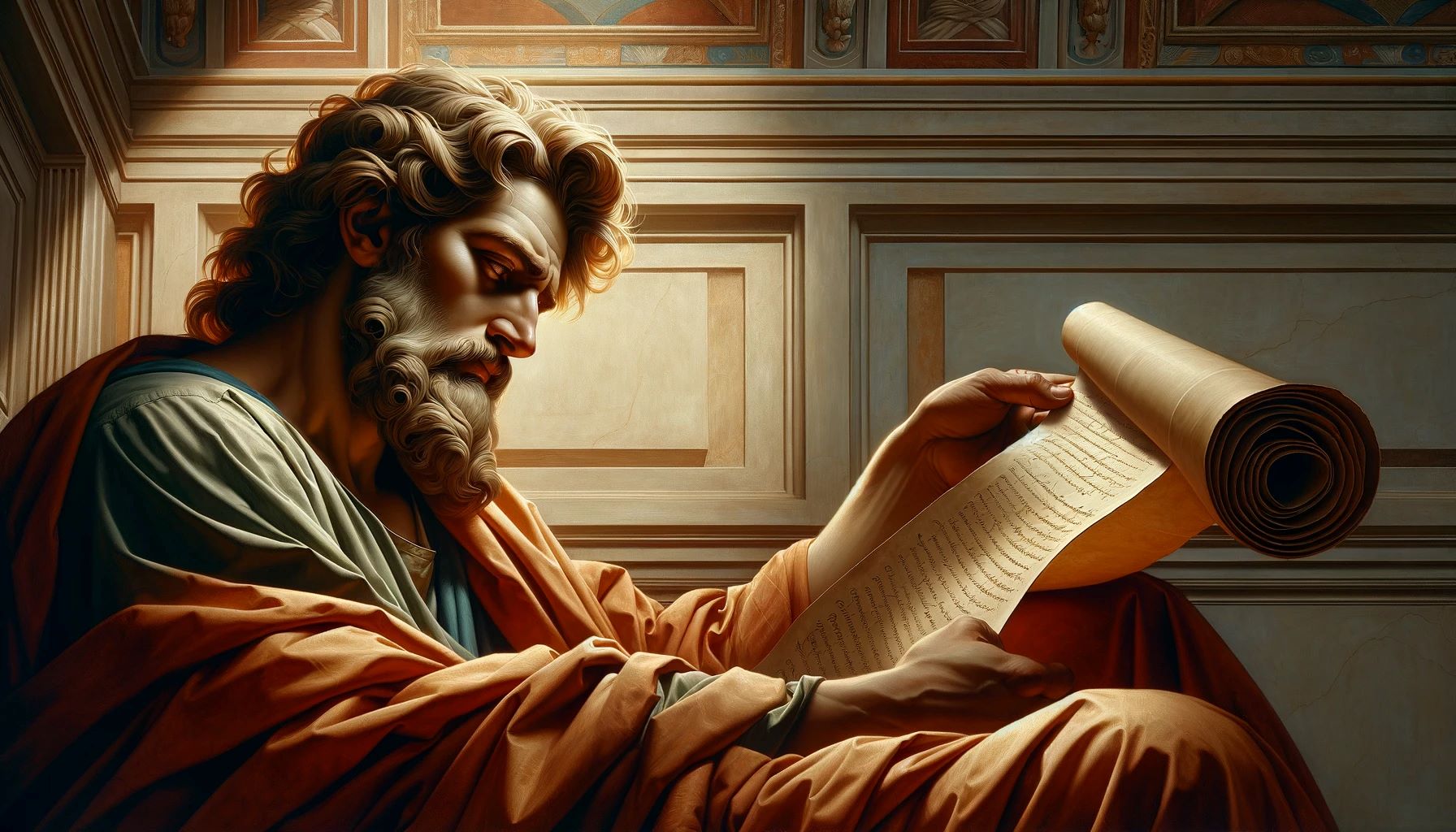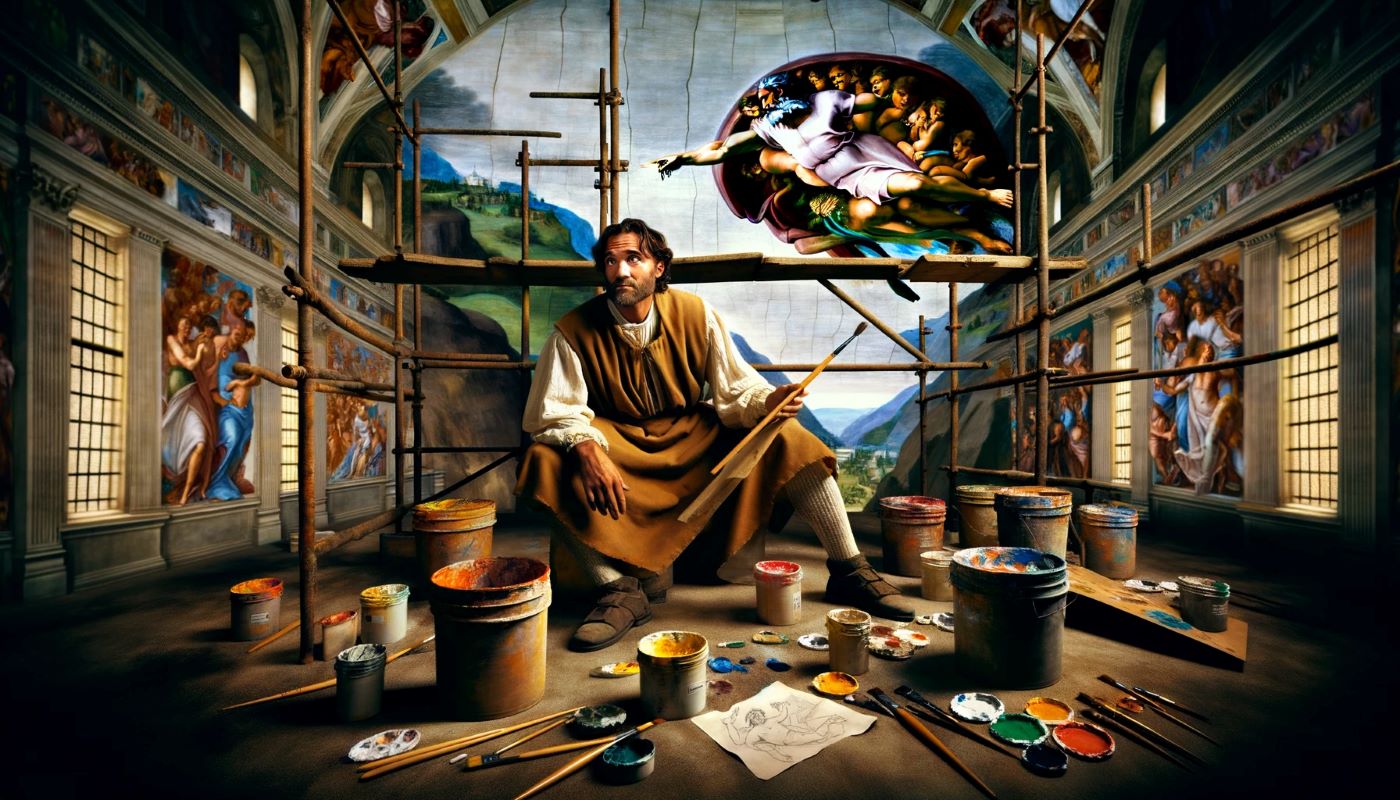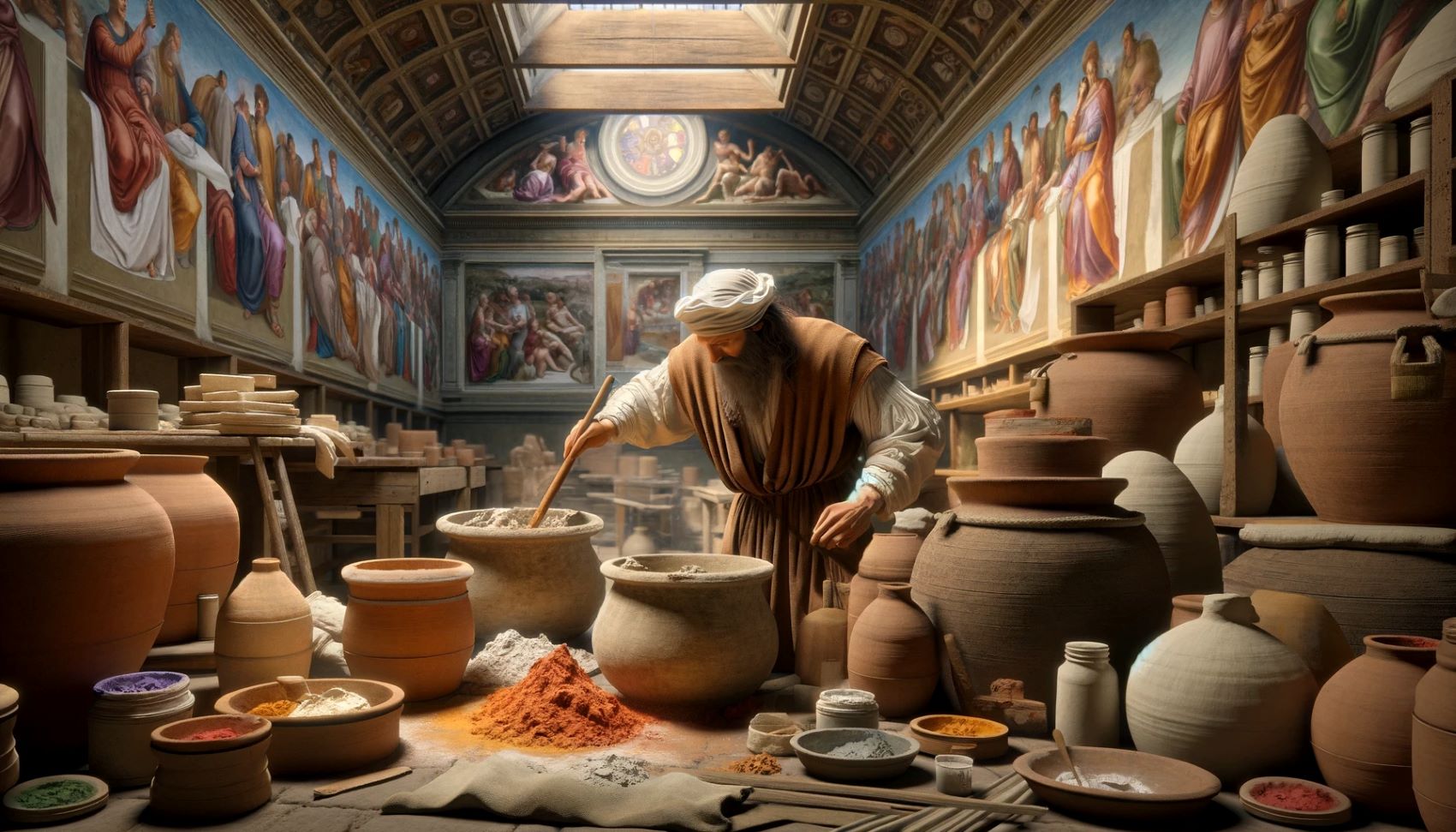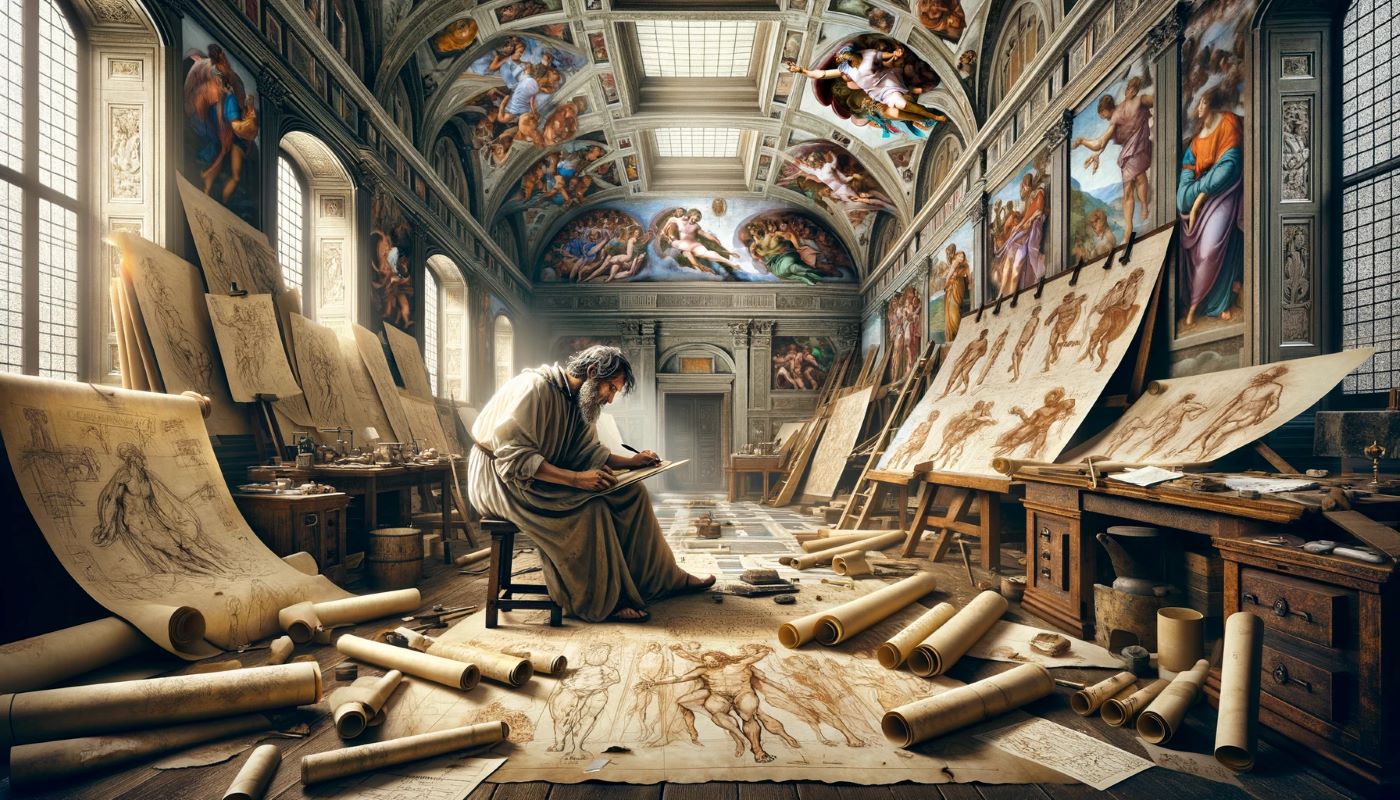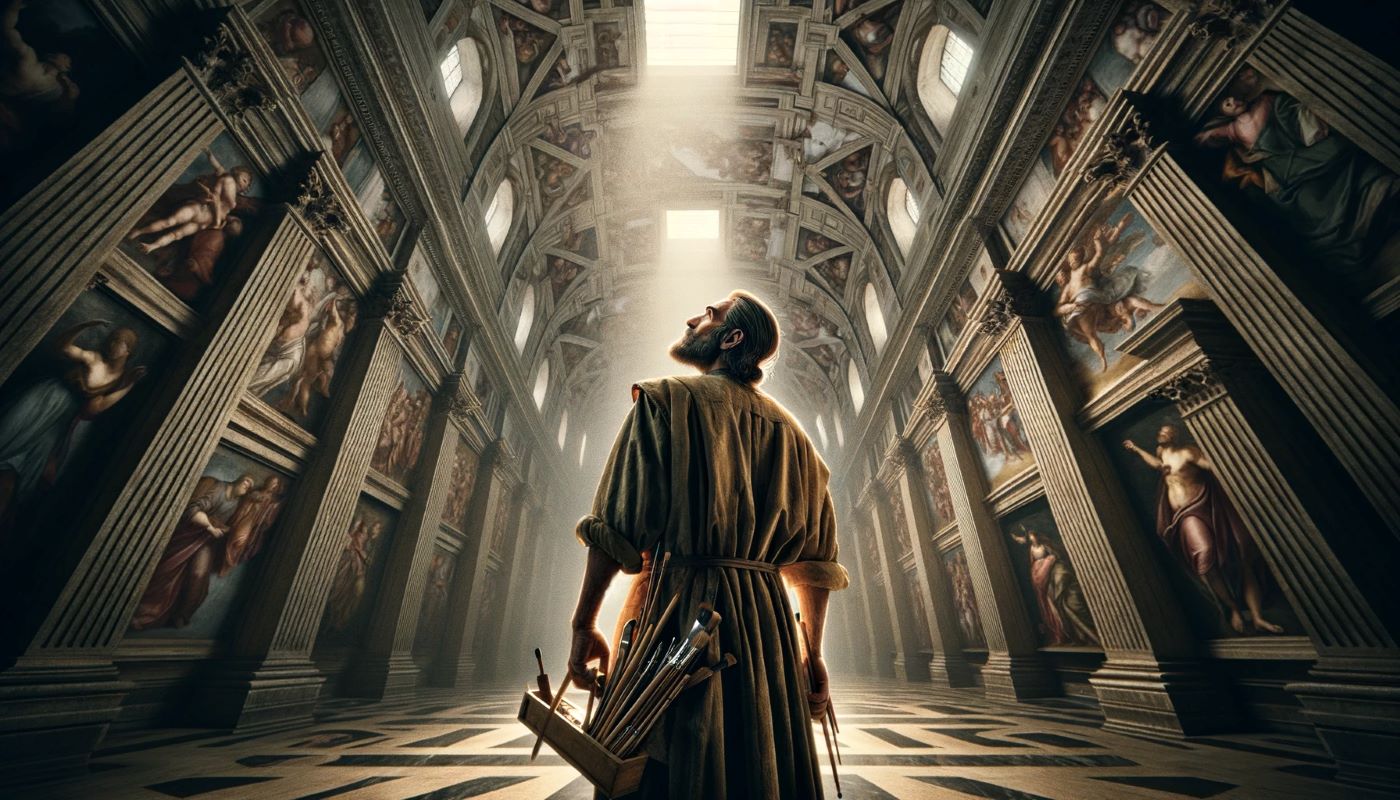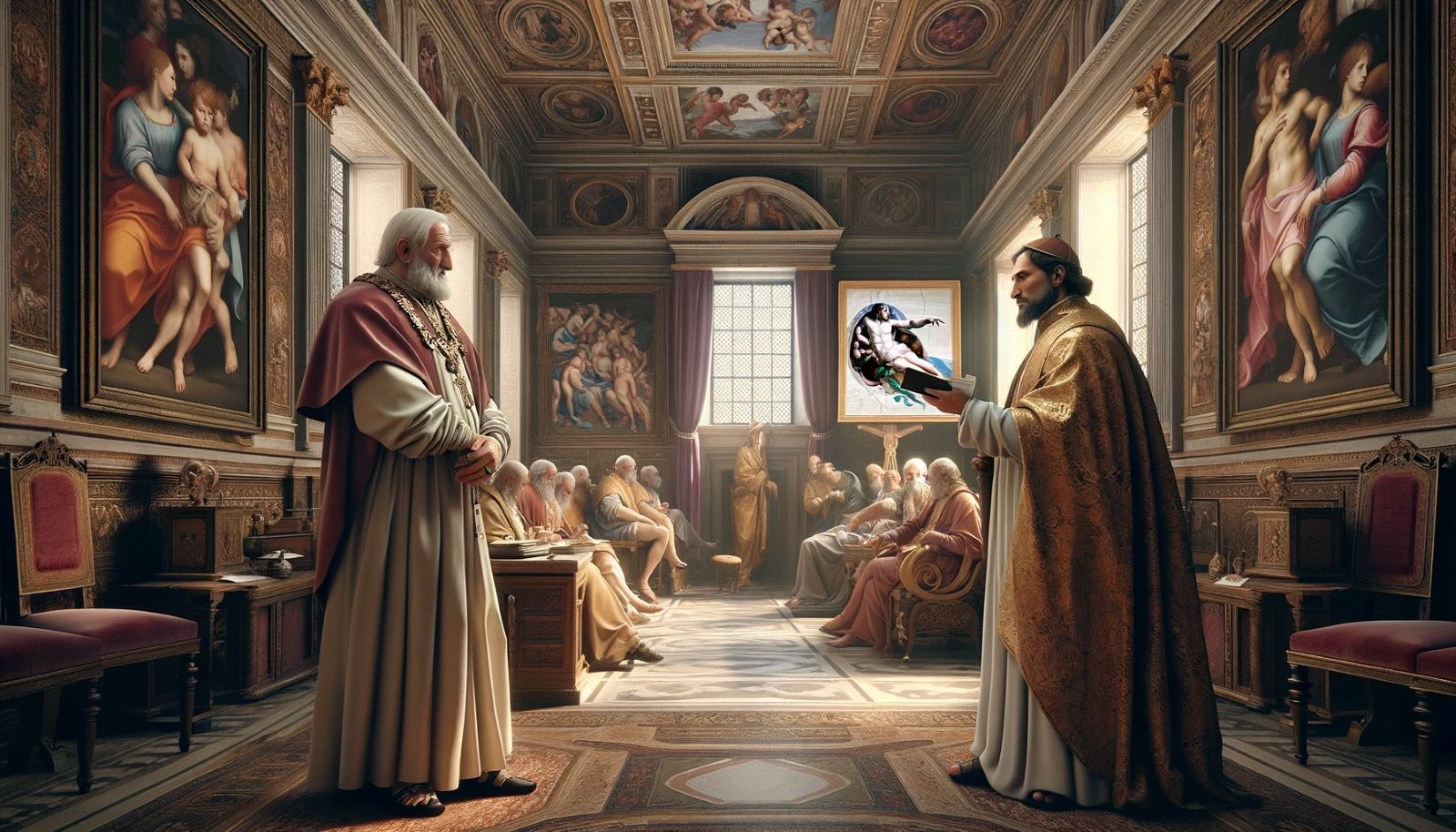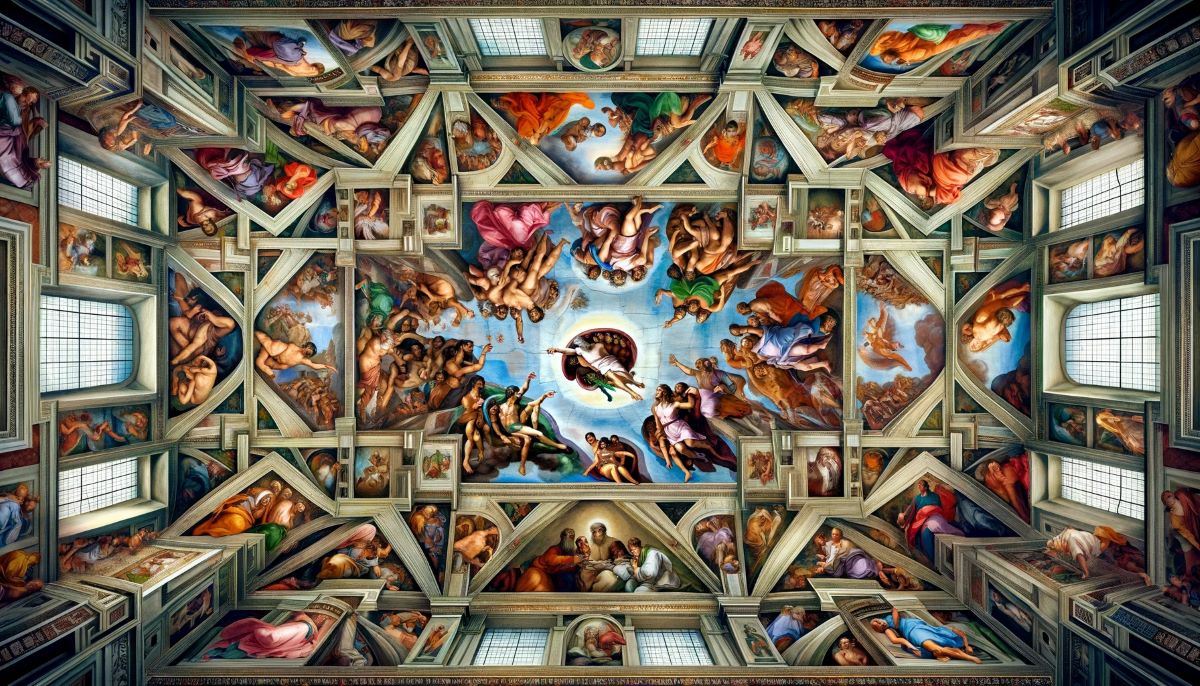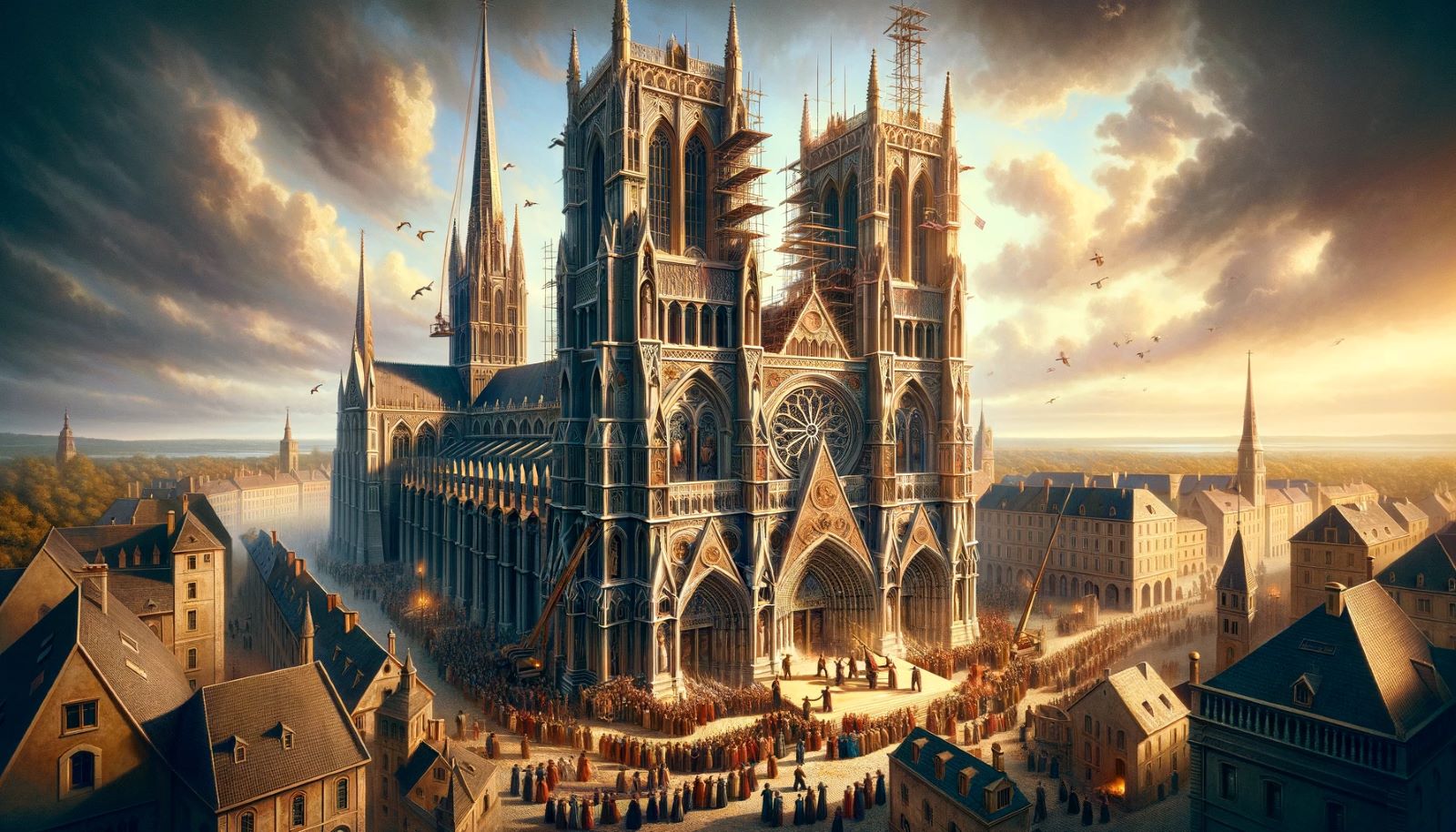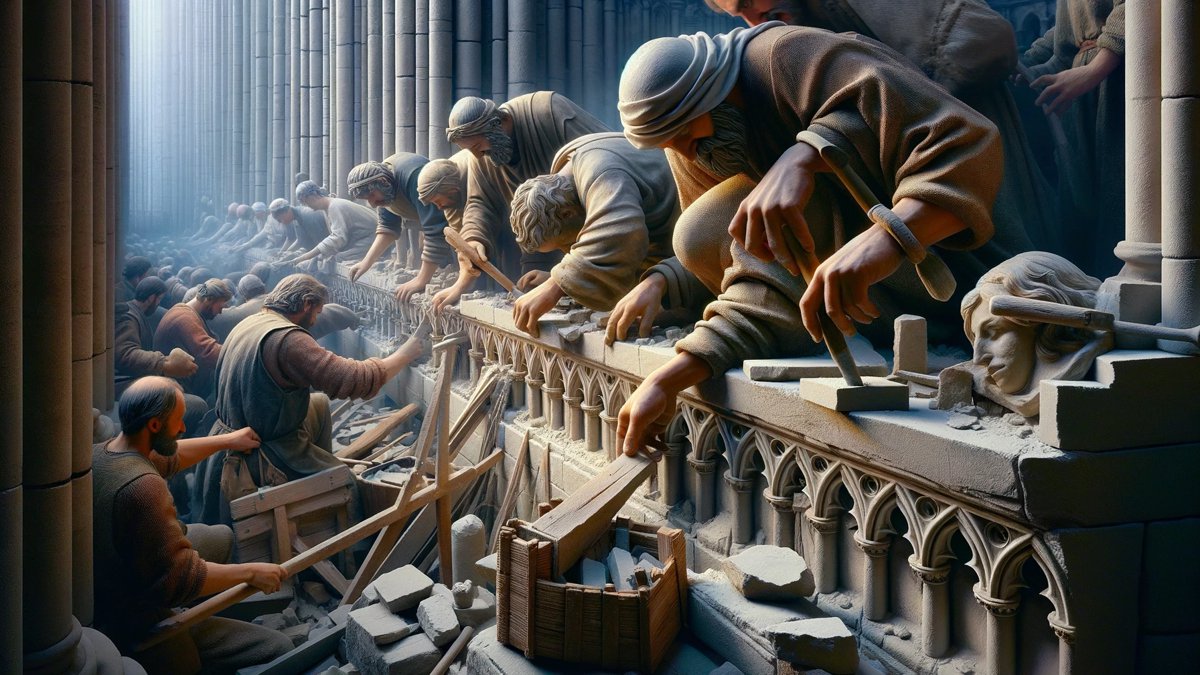Home>Arts and Culture>How Many Years Did It Take Michelangelo To Paint Sistine Chapel
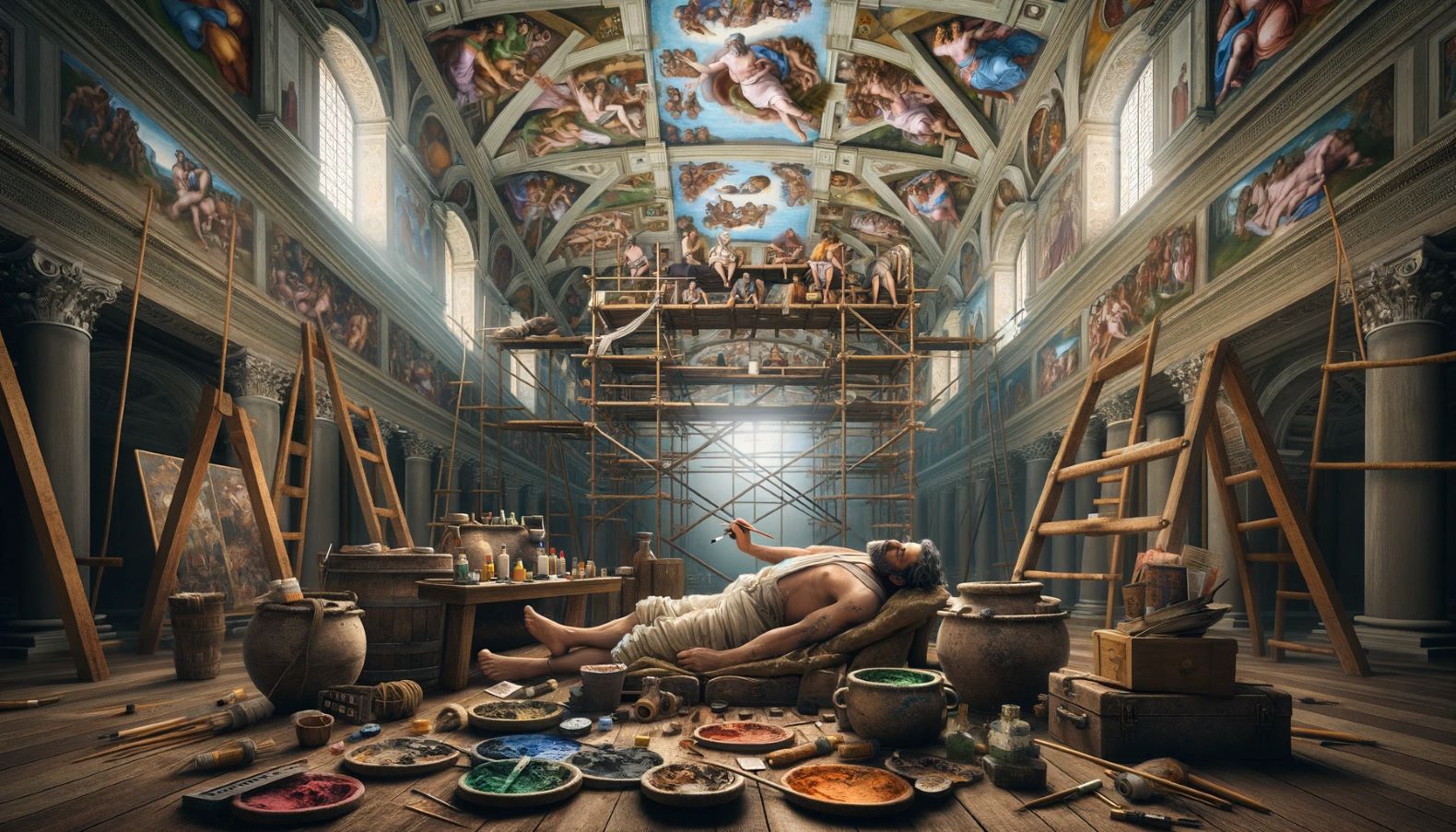

Arts and Culture
How Many Years Did It Take Michelangelo To Paint Sistine Chapel
Published: March 4, 2024
Peter Smith, Editorial Director at Christian.net, combines deep insights into faith, politics, and culture to lead content creation that resonates widely. Awarded for his contributions to religious discourse, he previously headed a major organization for religious communicators, enhancing dialogue on faith's societal impacts.
Discover the incredible dedication of Michelangelo in painting the Sistine Chapel. Learn about the years of artistic mastery and cultural significance in arts and culture.
(Many of the links in this article redirect to a specific reviewed product. Your purchase of these products through affiliate links helps to generate commission for Christian.net, at no extra cost. Learn more)
Table of Contents
Introduction
How many years did it take Michelangelo to paint the Sistine Chapel? This question has intrigued art enthusiasts and historians for centuries. The Sistine Chapel, located in Vatican City, is renowned for its stunning frescoes, which were created by the legendary artist Michelangelo. The process of painting the Sistine Chapel was a monumental undertaking that required immense skill, patience, and dedication. In this article, we will delve into the fascinating journey of Michelangelo's creation of the Sistine Chapel, exploring the years of dedication and artistic mastery that went into this iconic masterpiece.
Michelangelo's Early Life and Training
-
Early Life in Caprese: Michelangelo Buonarroti was born on March 6, 1475, in Caprese, a small town in Tuscany, Italy. From an early age, he displayed a remarkable talent for art, and his passion for sculpting and painting was evident to those around him.
-
Apprenticeship with Ghirlandaio: At the age of 13, Michelangelo became an apprentice to the renowned painter Domenico Ghirlandaio. Under Ghirlandaio's guidance, he honed his skills in fresco painting and learned the techniques that would later prove invaluable in his work on the Sistine Chapel.
-
Patronage of the Medici Family: Recognizing Michelangelo's exceptional talent, Lorenzo de' Medici, the ruler of Florence, invited him to live and study at the Medici palace. This exposure to the intellectual and artistic environment of the Medici court further enriched Michelangelo's artistic development.
-
Influence of Classical Art: During his time in Florence, Michelangelo immersed himself in the study of classical art and literature, drawing inspiration from the works of ancient sculptors and philosophers. This deep appreciation for classical aesthetics would profoundly influence his artistic style and vision.
-
Sculpting Masterpieces: While Michelangelo is best known for his work as a painter, his early career was marked by extraordinary achievements in sculpture. His masterpieces, including the iconic "David" and the "Pieta," showcased his unparalleled skill in capturing the human form with breathtaking realism.
-
Diverse Artistic Talents: Michelangelo's diverse artistic talents, encompassing sculpture, painting, and architecture, reflected his multifaceted genius. His ability to seamlessly transition between different mediums set him apart as a true Renaissance polymath.
Michelangelo's formative years laid the groundwork for his future artistic endeavors, shaping him into a visionary artist with an unwavering commitment to excellence.
Commission and Preparation for the Sistine Chapel
-
Commission by Pope Julius II: In 1508, Pope Julius II commissioned Michelangelo to undertake the monumental task of painting the ceiling of the Sistine Chapel. The pope recognized Michelangelo's exceptional talent and sought to elevate the chapel's interior with awe-inspiring frescoes that would glorify the Catholic Church and immortalize biblical narratives.
-
Preparation and Planning: Before commencing the painting process, Michelangelo dedicated considerable time to meticulous preparation. He studied the architectural nuances of the chapel's ceiling and meticulously planned the composition of the frescoes. His thorough preparation was essential for executing the complex and ambitious project with precision.
-
Creation of Full-Scale Drawings: To visualize the intricate details of the frescoes, Michelangelo created full-scale drawings, known as cartoons, which served as comprehensive blueprints for the final artwork. These preparatory drawings allowed him to refine his designs and ensure that the visual narrative would unfold seamlessly across the expansive ceiling.
-
Selection of Iconic Themes: Michelangelo's selection of biblical themes for the frescoes was deliberate and profound. The narratives depicted on the ceiling, ranging from the creation of Adam to the Last Judgment, conveyed profound theological significance and reflected the artist's deep reverence for Christian doctrine.
-
Challenges and Sacrifices: The arduous nature of the project demanded immense physical and mental endurance from Michelangelo. Working on scaffolding at dizzying heights, he endured strenuous conditions and made personal sacrifices to fulfill his artistic vision, demonstrating unwavering dedication to his craft.
-
Collaborative Efforts: While Michelangelo is rightfully celebrated as the mastermind behind the Sistine Chapel's ceiling, he also collaborated with a team of skilled artisans who assisted in the execution of the frescoes. Their collective efforts contributed to the realization of Michelangelo's grand artistic vision.
The commission and meticulous preparation for the Sistine Chapel marked the inception of a transformative artistic journey that would forever alter the landscape of Renaissance art and leave an indelible mark on the history of Western civilization.
The Painting Process
-
Application of Fresh Plaster: Michelangelo commenced the painting process by applying fresh plaster, known as intonaco, onto the ceiling of the Sistine Chapel. This preparatory layer provided a receptive surface for the pigments and facilitated the adhesion of the colors, ensuring the longevity of the frescoes.
-
Utilization of Buon Fresco Technique: Employing the buon fresco technique, Michelangelo executed the frescoes while the plaster was still damp. This method required exceptional skill and precision, as the pigments had to be applied swiftly before the plaster dried, thereby forming a durable bond between the colors and the surface.
-
Pigment Preparation and Application: Michelangelo meticulously prepared his own pigments using natural materials, such as minerals and plant extracts, to achieve vibrant and enduring hues. With painstaking attention to detail, he applied the pigments to the damp plaster, employing delicate brushwork to bring the scenes to life with remarkable clarity and depth.
-
Creation of Illusionistic Effects: Through masterful manipulation of light and shadow, Michelangelo imbued the frescoes with illusionistic effects, creating the illusion of three-dimensional forms within the two-dimensional space of the ceiling. This innovative approach elevated the visual impact of the artworks, captivating viewers with its immersive and dynamic qualities.
-
Execution of Complex Compositional Arrangements: The complexity of the compositional arrangements posed a formidable challenge, as Michelangelo orchestrated a harmonious interplay of figures, architectural elements, and narrative motifs across the expansive ceiling. His unparalleled ability to balance intricate details within a cohesive visual framework attested to his extraordinary artistic prowess.
-
Progression of Artistic Vision: As the painting process unfolded, Michelangelo's artistic vision evolved, leading to refinements and improvisations that enriched the visual storytelling of the frescoes. His intuitive approach to composition and narrative structure allowed for a fluid and organic development of the artworks, resulting in a profound and emotive portrayal of biblical themes.
-
Endurance and Perseverance: The painting process demanded unwavering endurance and perseverance from Michelangelo, who dedicated relentless hours to the meticulous execution of the frescoes. His unwavering commitment to achieving artistic excellence propelled him through the arduous stages of the painting process, culminating in the creation of enduring masterpieces.
The painting process of the Sistine Chapel's ceiling stands as a testament to Michelangelo's unparalleled skill, innovative techniques, and unwavering dedication to artistic perfection. Through his transformative vision and consummate craftsmanship, he breathed life into the ceiling, bestowing upon the world a timeless legacy of artistic brilliance.
Completion and Unveiling of the Sistine Chapel
-
Final Stages of Execution: As Michelangelo approached the culmination of the monumental project, the final stages of execution demanded meticulous attention to detail and unwavering precision. With each brushstroke, he infused the frescoes with a profound sense of vitality and emotional resonance, bringing the biblical narratives to life in a breathtaking display of artistic virtuosity.
-
Revelation of the Masterpiece: After years of arduous labor and unwavering dedication, Michelangelo completed the awe-inspiring frescoes adorning the ceiling of the Sistine Chapel. The revelation of the masterpiece marked a pivotal moment in the history of art, as the world awaited the unveiling of Michelangelo's magnum opus with eager anticipation and profound reverence.
-
Unveiling to the Public: In 1512, the Sistine Chapel was unveiled to the public, and the resplendent frescoes, bathed in the soft glow of natural light filtering through the chapel's windows, captivated spectators with their transcendent beauty. The unveiling ceremony heralded the debut of one of the most extraordinary artistic achievements of the Renaissance, solidifying Michelangelo's legacy as a visionary maestro of unparalleled stature.
-
Awe and Admiration: The unveiling of the Sistine Chapel elicited an outpouring of awe and admiration from those who beheld the breathtaking frescoes for the first time. The sheer magnitude of Michelangelo's artistic vision, coupled with the technical brilliance displayed in the execution of the frescoes, left an indelible impression on viewers, inspiring profound reverence for the artist's unparalleled mastery.
-
Endurance and Triumph: The completion and unveiling of the Sistine Chapel represented the culmination of Michelangelo's enduring triumph over adversity and his unwavering commitment to artistic excellence. The transformative power of his creative genius was laid bare for all to witness, as the frescoes transcended the confines of the chapel, resonating with timeless significance and enduring beauty.
-
Legacy of Artistic Splendor: The unveiling of the Sistine Chapel immortalized Michelangelo's legacy, positioning him as a preeminent figure in the pantheon of artistic luminaries. The frescoes, with their ethereal grandeur and profound spiritual resonance, continue to enrapture audiences, serving as an enduring testament to the transcendent power of human creativity and the boundless depths of artistic expression.
The completion and unveiling of the Sistine Chapel marked a watershed moment in the annals of art history, heralding the emergence of a transformative masterpiece that would forever alter the trajectory of Renaissance art and inspire generations of admirers with its timeless allure and profound spiritual resonance.
Legacy of Michelangelo's Sistine Chapel
-
Artistic Inspiration: The Sistine Chapel stands as a beacon of artistic inspiration, serving as a testament to Michelangelo's unparalleled mastery of the human form and his ability to imbue his creations with profound emotional depth. Artists across the centuries have looked to the frescoes of the Sistine Chapel as a wellspring of creative ingenuity, drawing from Michelangelo's innovative techniques and visionary approach to narrative storytelling.
-
Cultural Icon: The Sistine Chapel has transcended its status as a religious edifice to become a cultural icon of global significance. Its enduring allure has attracted countless visitors from around the world, who seek to bask in the transcendent beauty of Michelangelo's masterpieces and to bear witness to the transformative power of Renaissance art.
-
Spiritual Legacy: The frescoes of the Sistine Chapel continue to resonate with profound spiritual resonance, evoking a sense of awe and reverence in those who behold them. Michelangelo's profound exploration of biblical themes and his ability to infuse the narratives with emotive intensity have endowed the frescoes with enduring spiritual significance, transcending the boundaries of time and space.
-
Art Historical Significance: The Sistine Chapel represents a pivotal moment in the trajectory of art history, marking the apex of High Renaissance art and the zenith of Michelangelo's artistic career. Its impact reverberates through the annals of art history, underscoring the transformative power of artistic expression and the enduring legacy of human creativity.
-
Architectural Marvel: Beyond its artistic splendor, the Sistine Chapel stands as a testament to the harmonious fusion of art and architecture. The interplay between the architectural elements of the chapel and the resplendent frescoes adorning its ceiling exemplifies the seamless integration of artistic vision within the framework of sacred space, elevating the chapel to a realm of sublime aesthetic grandeur.
-
Educational Resource: The Sistine Chapel serves as an invaluable educational resource, offering a wealth of insight into the techniques, themes, and historical context of Renaissance art. Scholars and enthusiasts alike continue to study and analyze the frescoes, unraveling the layers of symbolism and artistic innovation embedded within Michelangelo's magnum opus.
-
Enduring Influence: The legacy of the Sistine Chapel reverberates through the realms of art, culture, and spirituality, leaving an indelible imprint on the collective consciousness of humanity. Its enduring influence serves as a testament to the enduring power of artistic expression to transcend temporal boundaries and resonate with the eternal essence of the human experience.
The legacy of Michelangelo's Sistine Chapel endures as a testament to the transformative power of artistic vision, the enduring resonance of spiritual expression, and the timeless allure of human creativity. Through its profound impact on art, culture, and spirituality, the Sistine Chapel stands as a testament to the transcendent power of human creativity and the boundless depths of artistic expression.
